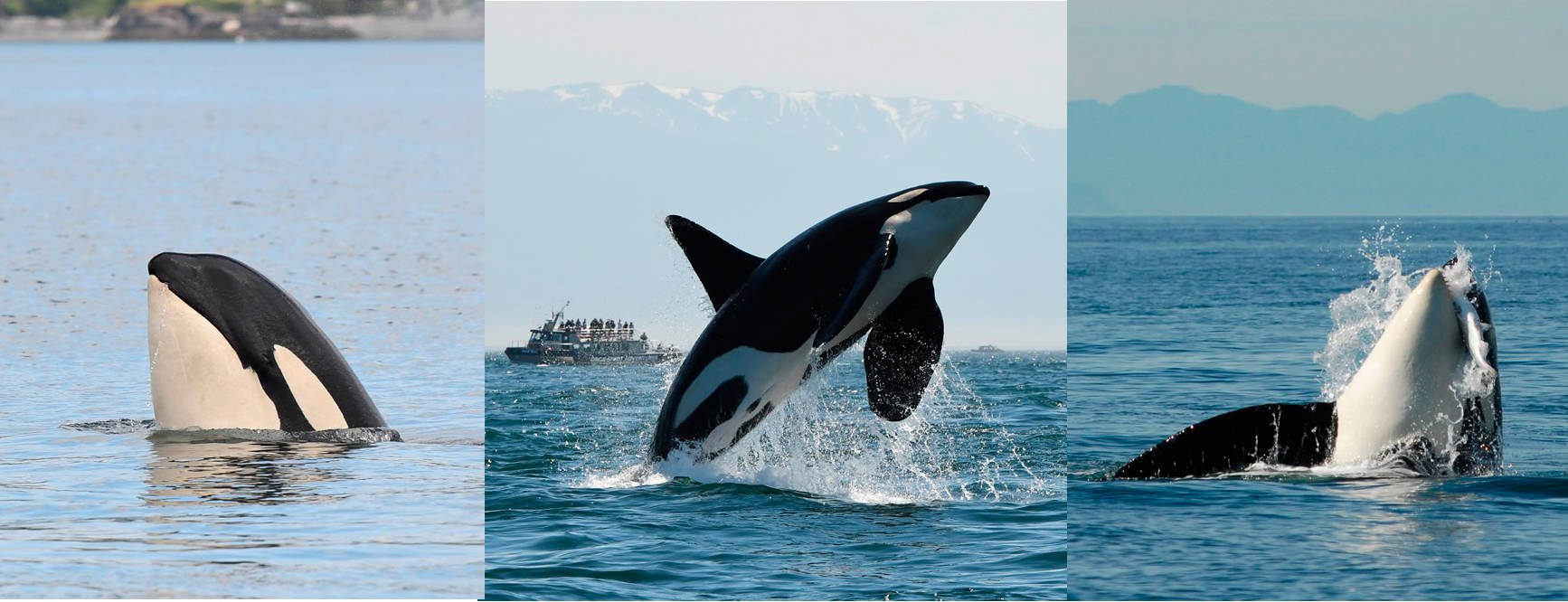From 76 to 73, the Southern resident orca population officially dropped by nearly 4 percent in the last month. The Center for Whale Research announced on Aug. 6 that an orca from each of the three Southern resident pods was missing and presumed dead.
Southern resident orcas are divided into three familial groups known as pods, J, K and L. In January, the Center for Whale Research said that neither Princess Angeline, J17, nor Scoter, K25, were expected to live to the summer. The third missing orca is Nyssa, L84. Southern resident orca lovers and activists had just celebrated earlier in 2019 over the birth of two calves.
Orcas were listed as an endangered species in Washington state in 2004, and nationally in 2005. The population of Southern resident killer whales has steadily declined from 98 in 1995 to the remaining 73 today.
Center for Whale Research scientists observed the J-pod on Dec. 31, noting that J17, a 42-year-old female, had pronounced peanut head, a condition that orcas develop when they’re emaciated. J17’s matriarchal predecessors lived for nearly twice as long as she did – one notable example being Granny, J2, who was somewhere between her late 80s to early 100s when she was last observed. J17 was the mother of Tahlequah, J35, who famously carried her deceased calf on her head for 17 days in July 2018.
“We reported that J17 was not in good body condition last winter, perhaps from stress,” staff wrote in a press release from the Center for Whale Research. “She is survived by two daughters and a son, J35, J53 and J44, respectively.”
Since the death of his mother K13 in winter 2017, K25’s health deteriorated.
Aside from the need for healthy, reproductive-aged females, there is also a significant necessity for males in the pods, University of Washington researcher Deborah Giles told the Journal in January 2019. Orca mothers assist their adult offspring in hunting, and without his mother, K25 had to fend for himself. He was the oldest male in his family line and last seen in September 2018. He is survived by two sisters and a brother, K20, K27 and K34, according to the center.
“And, lastly, 29-year-old male, L84, has been missing all summer in encounters conducted by our Canadian Department of Fisheries and Oceans colleagues along the west coast of Vancouver Island,” the Center for Whale Research press release said. “L pod has not come into the Salish Sea yet this summer.”
L84 was the last of a matriline of 11 whales.
There isn’t enough Chinook salmon to sustain the orca population, according to Giles. Many of the whales are starving to death. A factor in the reduction of the Southern resident orca population is the decline in food availability. The orcas are salmon-eaters that primarily eat Chinook.
Gov. Jay Inslee committed to increasing the hatchery production of salmon to assist in the recovery of the Southern resident orcas. Earlier this year, $933 million in actions were passed by the state Legislature to fund Southern resident recovery efforts.
Amidst the sadness of losing three Southern residents, The Whale Museum reminded everyone that there are still two calves that need names — J56 and L124. On Aug. 9, the museum shared a link with name options for both of the orcas. The names being considered for J56 are Nettle, Rhody, Salmonberry and Tofino (Tofi); and for L124 are Constance, Puffin, Salty and Whistle.
For more information about the naming of the babies and to learn the meanings behind the proposed names, visit https://bit.ly/2Tn9d6L. To vote for your favorite name, email oap@whalemuseum.org.



